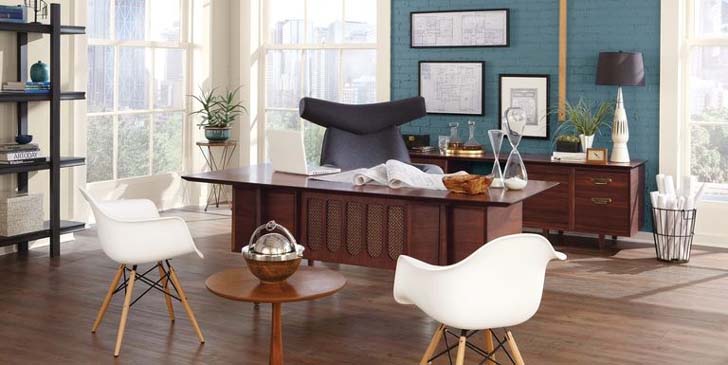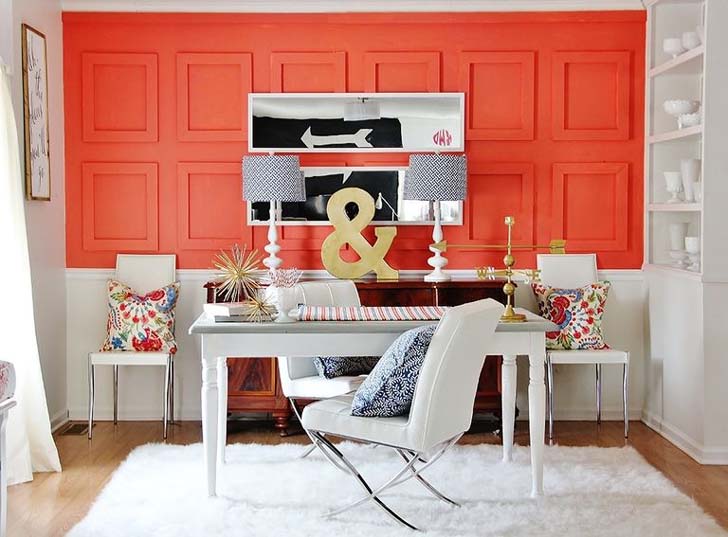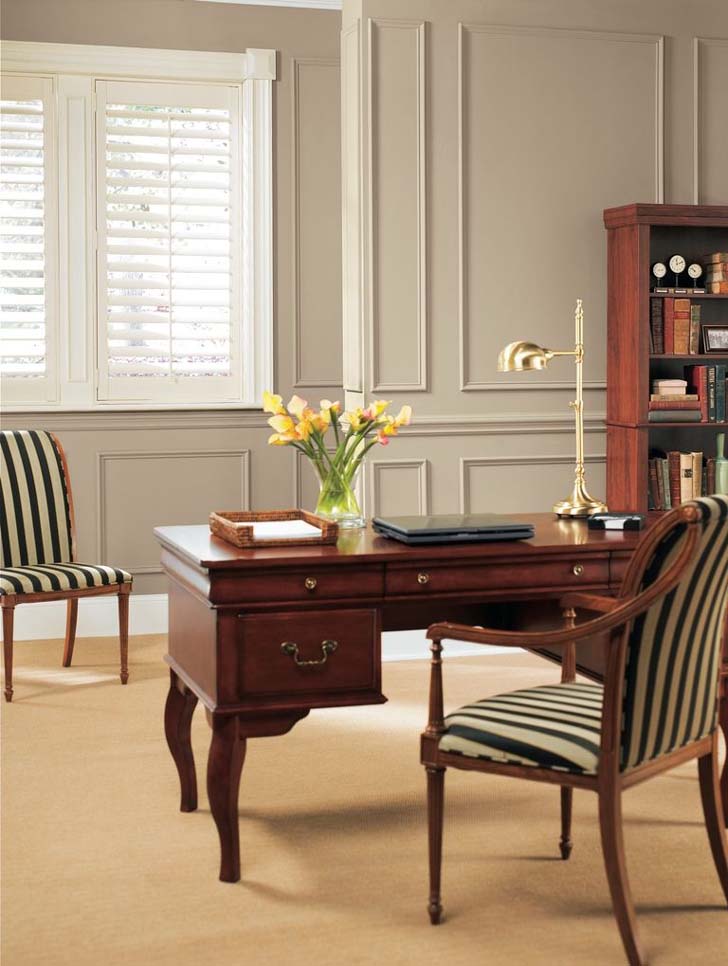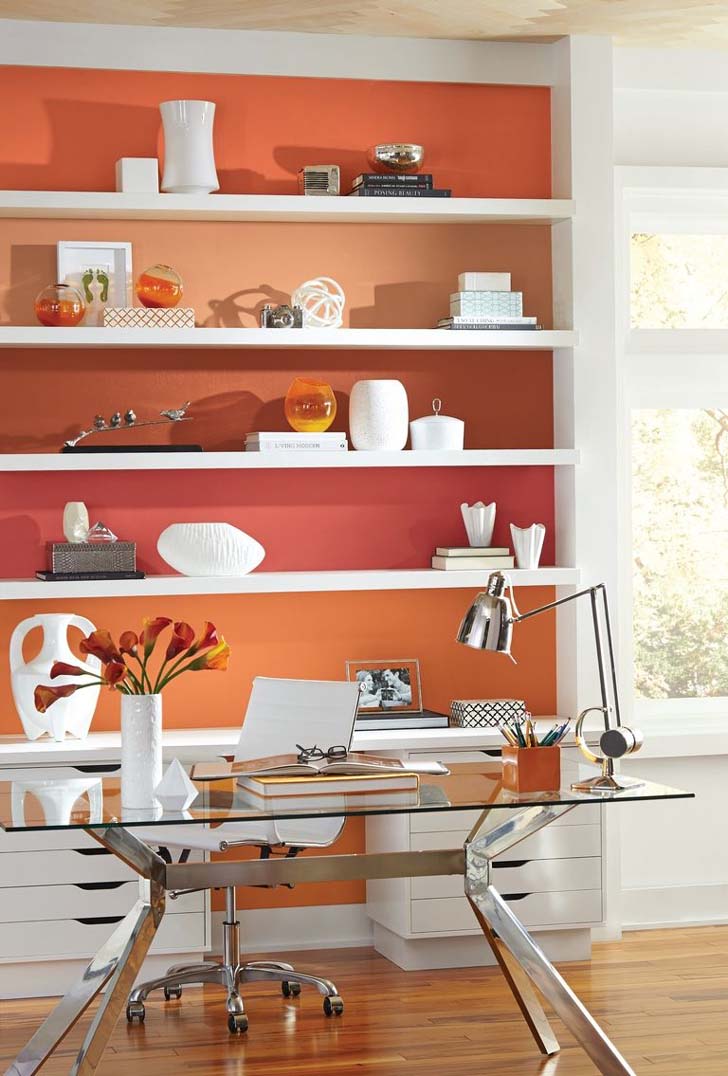From wall color to furniture style, we consult a design psychologist on how to curate the perfect office.

By Sara Tardiff, ELLE Decor
If you’re a Design Girl, there are few joys in life as gratifying as scrolling through Instagram’s array of stunning workspaces. You could spend hours plotting your dream office (as if you haven't done that already).
[post_ads]But before leaping into action and completely redesigning your desk or home office,
know that pretty decor shouldn't be your only concern. In order to
optimize your productivity, creativity, and focus, you need to follow
some rules, says design psychologist Sally Augustin of Design With Science.According
to Augustin, factors like color, furniture choice, and lighting are key
to getting the most out of your work day. Find out her 5 tips for
curating your most efficient workspace yet — and maybe this week will finally be the week you get your inbox to zero.

1.
Pick the best color palette for the type of work you do.
Since all jobs have different demands, it’s important to surround yourself with the color that encourages the right mindset. In collaboration with Sherwin-Williams, Augustin did a survey on how Americans respond to different color palettes. “If you do more knowledge work, like in an office setting, it is important to be relaxed so you should opt for soothing blue shades,” says Augustin. “If your work is more active, red offers a good burst of strength.”
Green is a great color for most work spaces, because the color is often associated with advanced creative thinking and being in a positive emotional state. That kind of boost can make all the difference, no matter your field.
[post_ads_2]
2.
Make your space easy to adjust on a day-to-day basis.
“People love to have the option of customizing their work experience,” Augustin says. “If they can adjust the lights, their chair, or even move the furniture around whenever they want to, it gives them a sense of control and confidence.”
If you’re in charge of the room’s design, using a light dimmer and furniture that is easily manipulated is your best bet. If you don’t have as much control, opting for an adjustable chair or some desk decor that you can freely rearrange will give you some ownership over your work area.
Pick the best color palette for the type of work you do.
Since all jobs have different demands, it’s important to surround yourself with the color that encourages the right mindset. In collaboration with Sherwin-Williams, Augustin did a survey on how Americans respond to different color palettes. “If you do more knowledge work, like in an office setting, it is important to be relaxed so you should opt for soothing blue shades,” says Augustin. “If your work is more active, red offers a good burst of strength.”
Green is a great color for most work spaces, because the color is often associated with advanced creative thinking and being in a positive emotional state. That kind of boost can make all the difference, no matter your field.
[post_ads_2]
2.
Make your space easy to adjust on a day-to-day basis.
“People love to have the option of customizing their work experience,” Augustin says. “If they can adjust the lights, their chair, or even move the furniture around whenever they want to, it gives them a sense of control and confidence.”
If you’re in charge of the room’s design, using a light dimmer and furniture that is easily manipulated is your best bet. If you don’t have as much control, opting for an adjustable chair or some desk decor that you can freely rearrange will give you some ownership over your work area.

3.
Lighting is more important than you think.
Natural light boosts our mood and our performance, according to Augustin. “In any work environment, you’re trying to elevate people’s moods,” she says. “And that means the more natural light, the better.” Work with the lighting you have and consider using sheer blinds over the windows to let in as much light as possible, even if you need some privacy. Try arranging your desk as close as you can to the natural light source.
[post_ads_2]
4.
Natural light boosts our mood and our performance, according to Augustin. “In any work environment, you’re trying to elevate people’s moods,” she says. “And that means the more natural light, the better.” Work with the lighting you have and consider using sheer blinds over the windows to let in as much light as possible, even if you need some privacy. Try arranging your desk as close as you can to the natural light source.
[post_ads_2]
4.
Add some living creatures.
Believe it or not, looking at plants and fish tanks can help you think more creatively. Having plants in your immediate surroundings is linked to improved performance, says Augustin. Fish, whether they’re in a small fishbowl or larger tank, can provide a sense of calm that might aid your ability to focus and stay stress-free.
Believe it or not, looking at plants and fish tanks can help you think more creatively. Having plants in your immediate surroundings is linked to improved performance, says Augustin. Fish, whether they’re in a small fishbowl or larger tank, can provide a sense of calm that might aid your ability to focus and stay stress-free.

5.
Move away from maximalism.
The age-old trick of cleaning your room to feel immediately less stressed is true of your workspace decor, too. “Moderate levels of visual complexity are great: they give your mind something to do without being too busy and time consuming,” Augustin says. Try to cut back on room decorations, accent furniture, and any clutter. Remember, when it comes to your interior design: not too little, not too much, just right.
The age-old trick of cleaning your room to feel immediately less stressed is true of your workspace decor, too. “Moderate levels of visual complexity are great: they give your mind something to do without being too busy and time consuming,” Augustin says. Try to cut back on room decorations, accent furniture, and any clutter. Remember, when it comes to your interior design: not too little, not too much, just right.
























